A new, thin-lensed telescope design could far surpass James Webb – goodbye mirrors, hello diffractiv
Space telescopes are limited in size due to the difficulties and cost of getting into orbit. By revamping an old optical technology, researchers are working on a lightweight and thin telescope design.
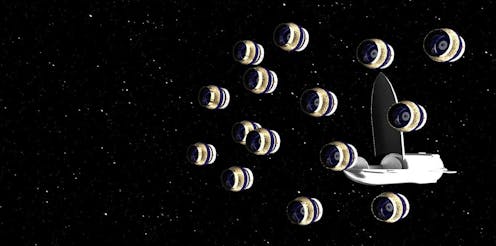
Astronomers have discovered more than 5,000 planets outside of the solar system to date. The grand question is whether any of these planets are home to life. To find the answer, astronomers will likely need more powerful telescopes than exist today.
I am an astronomer who studies astrobiology and planets around distant stars. For the last seven years, I have been co-leading a team that is developing a new kind of space telescope that could collect a hundred times more light than the James Webb Space Telescope, the biggest space telescope ever built.
Almost all space telescopes, including Hubble and Webb, collect light using mirrors. Our proposed telescope, the Nautilus Space Observatory, would replace large, heavy mirrors with a novel, thin lens that is much lighter, cheaper and easier to produce than mirrored telescopes. Because of these differences, it would be possible to launch many individual units into orbit and create a powerful network of telescopes.
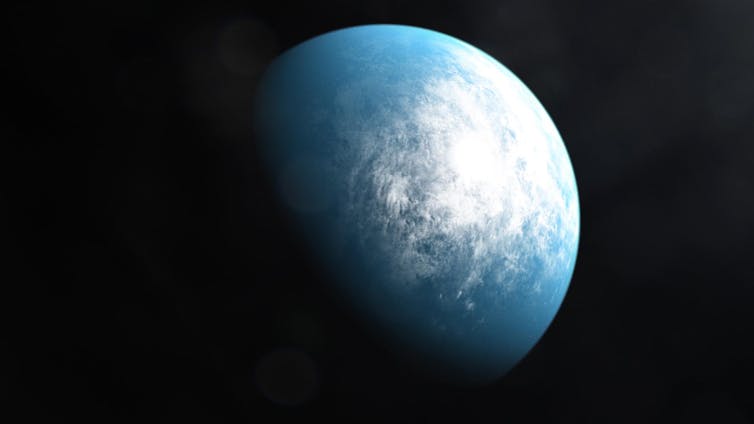
The need for larger telescopes
Exoplanets – planets that orbit stars other than the Sun – are prime targets in the search for life. Astronomers need to use giant space telescopes that collect huge amounts of light to study these faint and faraway objects.
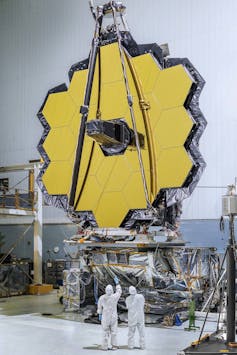
Existing telescopes can detect exoplanets as small as Earth. However, it takes a lot more sensitivity to begin to learn about the chemical composition of these planets. Even Webb is just barely powerful enough to search certain exoplanets for clues of life – namely gases in the atmosphere.
The James Webb Space Telescope cost more than US$8 billion and took over 20 years to build. The next flagship telescope is not expected to fly before 2045 and is estimated to cost $11 billion. These ambitious telescope projects are always expensive, laborious and produce a single powerful – but very specialized – observatory.
A new kind of telescope
In 2016, aerospace giant Northrop Grumman invited me and 14 other professors and NASA scientists – all experts on exoplanets and the search for extraterrestrial life – to Los Angeles to answer one question: What will exoplanet space telescopes look like in 50 years?
In our discussions, we realized that a major bottleneck preventing the construction of more powerful telescopes is the challenge of making larger mirrors and getting them into orbit. To bypass this bottleneck, a few of us came up with the idea of revisiting an old technology called diffractive lenses.
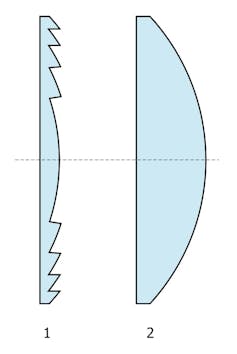
Conventional lenses use refraction to focus light. Refraction is when light changes direction as it passes from one medium to another – it is the reason light bends when it enters water. In contrast, diffraction is when light bends around corners and obstacles. A cleverly arranged pattern of steps and angles on a glass surface can form a diffractive lens.
The first such lenses were invented by the French scientist Augustin-Jean Fresnel in 1819 to provide lightweight lenses for lighthouses. Today, similar diffractive lenses can be found in many small-sized consumer optics – from camera lenses to virtual reality headsets.
Thin, simple diffractive lenses are notorious for their blurry images, so they have never been used in astronomical observatories. But if you could improve their clarity, using diffractive lenses instead of mirrors or refractive lenses would allow a space telescope to be much cheaper, lighter and larger.
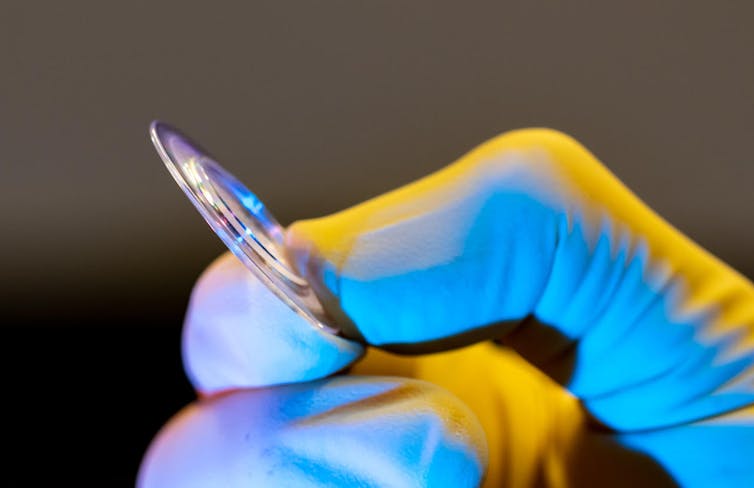
A thin, high-resolution lens
After the meeting, I returned to the University of Arizona and decided to explore whether modern technology could produce diffractive lenses with better image quality. Lucky for me, Thomas Milster – one of the world’s leading experts on diffractive lens design – works in the building next to mine. We formed a team and got to work.
Over the following two years, our team invented a new type of diffractive lens that required new manufacturing technologies to etch a complex pattern of tiny grooves onto a piece of clear glass or plastic. The specific pattern and shape of the cuts focuses incoming light to a single point behind the lens. The new design produces a near-perfect quality image, far better than previous diffractive lenses.
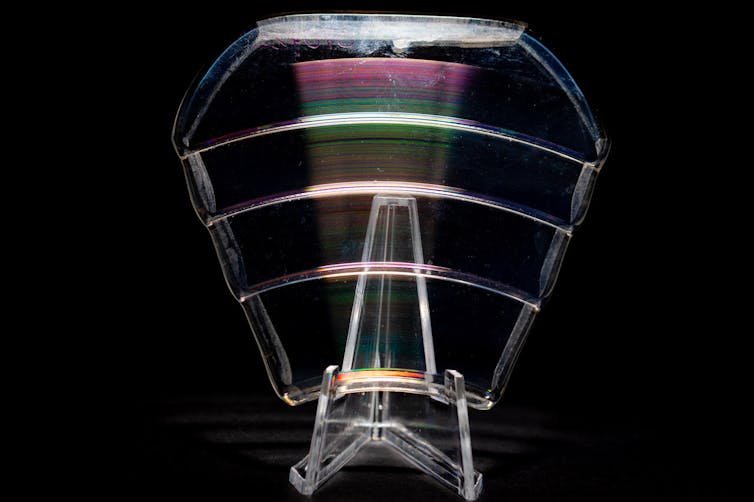
Because it is the surface texture of the lens that does the focusing, not the thickness, you can easily make the lens bigger while keeping it very thin and lightweight. Bigger lenses collect more light, and low weight means cheaper launches to orbit – both great traits for a space telescope.
In August 2018, our team produced the first prototype, a 2-inch (5-centimeter) diameter lens. Over the next five years, we further improved the image quality and increased the size. We are now completing a 10-inch (24-cm) diameter lens that will be more than 10 times lighter than a conventional refractive lens would be.
Power of a diffraction space telescope
This new lens design makes it possible to rethink how a space telescope might be built. In 2019, our team published a concept called the Nautilus Space Observatory.
Using the new technology, our team thinks it is possible to build a 29.5-foot (8.5-meter) diameter lens that would be only about 0.2 inches (0.5 cm) thick. The lens and support structure of our new telescope could weigh around 1,100 pounds (500 kilograms). This is more than three times lighter than a Webb–style mirror of a similar size and would be bigger than Webb’s 21-foot (6.5-meter) diameter mirror.
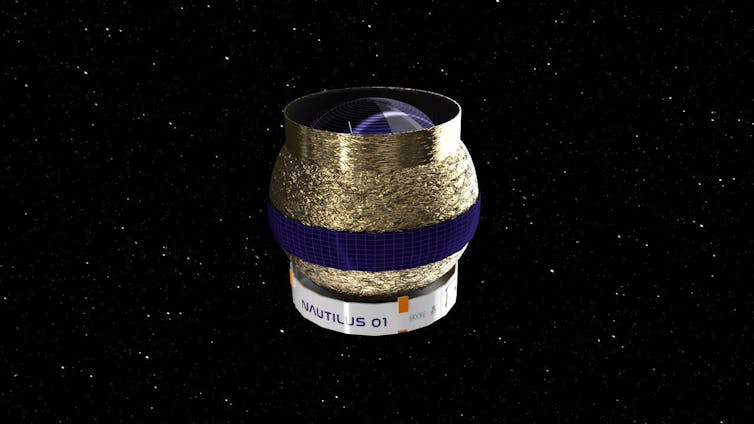
The lenses have other benefits, too. First, they are much easier and quicker to fabricate than mirrors and can be made en masse. Second, lens-based telescopes work well even when not aligned perfectly, making these telescopes easier to assemble and fly in space than mirror-based telescopes, which require extremely precise alignment.
Finally, since a single Nautilus unit would be light and relatively cheap to produce, it would be possible to put dozens of them into orbit. Our current design is in fact not a single telescope, but a constellation of 35 individual telescope units.
Each individual telescope would be an independent, highly sensitive observatory able to collect more light than Webb. But the real power of Nautilus would come from turning all the individual telescopes toward a single target.
By combining data from all the units, Nautilus’ light-collecting power would equal a telescope nearly 10 times larger than Webb. With this powerful telescope, astronomers could search hundreds of exoplanets for atmospheric gases that may indicate extraterrestrial life.
Although the Nautilus Space Observatory is still a long way from launch, our team has made a lot of progress. We have shown that all aspects of the technology work in small-scale prototypes and are now focusing on building a 3.3-foot (1-meter) diameter lens. Our next steps are to send a small version of the telescope to the edge of space on a high-altitude balloon.
With that, we will be ready to propose a revolutionary new space telescope to NASA and, hopefully, be on the way to exploring hundreds of worlds for signatures of life.
Daniel Apai receives funding from NASA, NSF, and the Gordon and Betty Moore Foundation. He works for The University of Arizona.
Read These Next
West Antarctica’s history of rapid melting foretells sudden shifts in continent’s ‘catastrophic’ geo
A picture of what West Antarctica looked like when its ice sheet melted in the past can offer insight…
From truce in the trenches to cocktails at the consulate: How Christmas diplomacy seeks to exploit s
World leaders like to talk up peace at Christmastime. But alongside the tales of seasonal breaks in…
People are getting their news from AI – and it’s altering their views
Even when information is factually accurate, how it’s presented can introduce subtle biases. As large…





